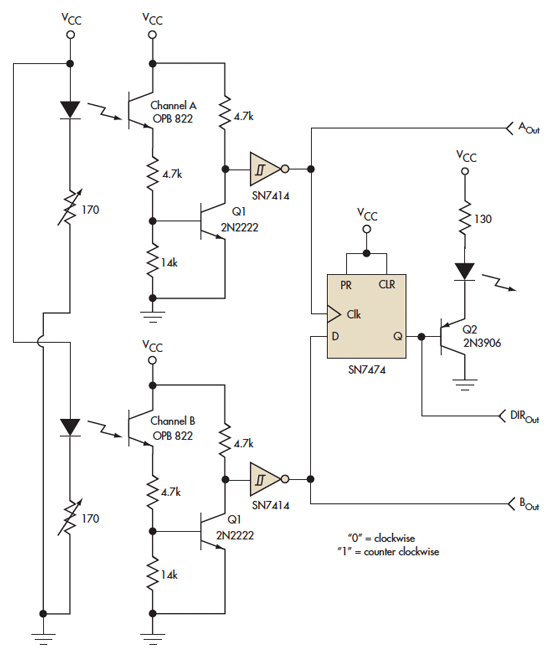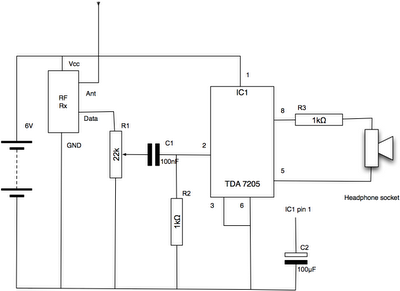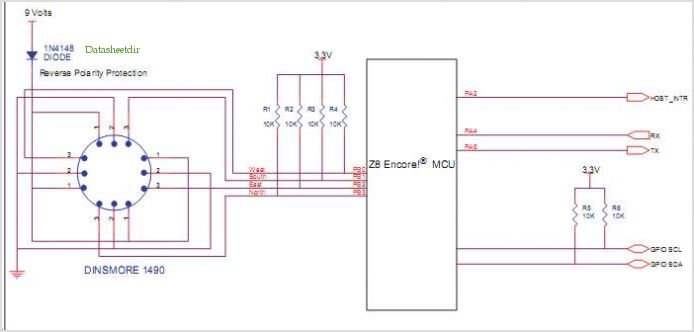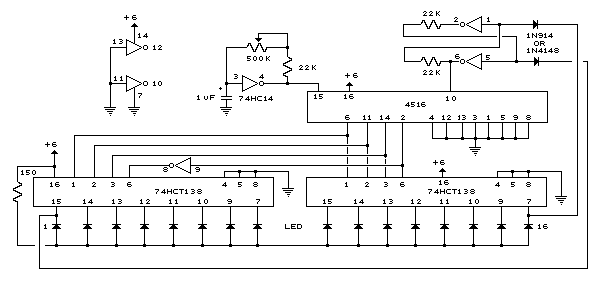
HF Direction finding

The main requirements are a directional antenna, such as a ferrite rod or frame, and a screened case for the equipment. In the past, some competitors modified standard medium wave receivers to operate on the 160m band by retuning the front end. However, most serious competitors now utilize purpose-built sets designed to withstand the inevitable impacts. In the early days of Direction Finding (DF), all receivers were battery-operated valve sets, which evolved into discrete component transistor sets. With advancements in technology, many of the best receivers currently in use employ basic integrated circuit designs, which will be discussed later in this article. The overall cost of a useful 160m receiver is approximately £20-30 with careful purchasing at local rallies. DFing, defined as locating a deliberately hidden transmitter and its crew by taking cross bearings with a suitable radio receiver and conducting physical searches in the vicinity, is a sport accessible to all ages and professions, much like amateur radio itself. Participation is encouraged, preferably alongside an experienced competitor, to gain insight into the strategies of skilled transmitter crews and to understand the behavior of low-frequency signals and receiver performance. It is ineffective to leave a vehicle five miles from the transmitter due to strong signal reception. Many competitors offer lectures to clubs and organize local events, or for those less physically inclined, indoor computer-based competitions that can be just as competitive. Initial contact should be made through the National RSGB Direction Finding committee, which will facilitate local lectures. Eight RSGB qualifying rounds are held each summer, organized by local clubs, culminating in a National Final for all qualifiers in September. During a qualifying round, competitors must locate two transmitters, with a form signed and timed by the transmitter operators. The winner is the first to find the second transmitter. In the National Final, the objective is to locate three transmitters. All competitors gather at a predetermined starting point on a specified Sunday to sign in and prepare to take bearings on the first fixed-time signals from the transmitters at 1320-1324 BST. If signals are successfully received, teams can disperse after plotting their bearings. The transmitters must be located on the same 1:50,000 Ordnance Survey (OS) map as the starting point, ensuring a practical route to each without trespassing. A second fixed-time transmission occurs from all transmitters at 1400-1404 BST.
A schematic for a 160m Direction Finding receiver typically includes several key components: a directional antenna, RF amplifier, mixer, local oscillator, IF amplifier, detector, and audio amplifier. The directional antenna, such as a ferrite rod or frame, is essential for receiving signals from the desired direction while rejecting interference from other directions. The RF amplifier boosts the weak signals captured by the antenna, preparing them for the subsequent stages.
The mixer combines the amplified RF signals with those from a local oscillator, producing intermediate frequency (IF) signals that are easier to process. The IF amplifier further enhances these signals, allowing for improved selectivity and sensitivity. The detector demodulates the IF signals, converting them into audio signals for the audio amplifier, which drives the speaker or headphones for audible output.
To ensure robust performance, the entire circuit is housed in a screened case to minimize electromagnetic interference, which is crucial in a competitive environment where signal clarity can significantly impact the outcome. The use of integrated circuits in modern designs allows for compact layouts, reducing the overall size and weight of the receiver while maintaining high performance. This integration also contributes to increased reliability and ease of assembly, making it accessible for hobbyists and serious competitors alike.
In conclusion, the design of a 160m Direction Finding receiver balances performance, durability, and cost-effectiveness, making it a vital tool for enthusiasts engaged in this challenging and rewarding sport.The main requirements are only a directional antenna (ie a ferrite rod or frame) and a screened case for the works of the set. In the past some competitors have modified ordinary medium wave receivers to cover 160m by retuning the front end.
However, most `serious` competitors now have purpose-built sets suitably `ruggedised` to take the inevitable knocks, and of course the competitor also takes the knocks, so be warned. In the early years of DF, all the receivers were battery valve sets. These progressed to discrete component transistor sets, but with the advance in technology most of the best receivers in use today use the basic inte- grated circuit design that will be described later in this article. The overall cost of what is a rather useful 160m receiver is no more than £20-30 with judicious purchasing at local rallies.
I would define the sport of DFing as `finding a deliberately well hidden transmitter (and its crew) by taking cross bearings with a suitable radio receiver and physical searching in the immediate locale of the transmitter site`. As I intimated above, it is a `sport` for all ages and all professions, as indeed is amateur radio in general.
Anyone can take part, and all are very welcome to do so. It is advisable, however, firstly to team up with an existing competitor, to gain experience in the wiles of the sadistic TX crews and get a feel for the behaviour of LF signals and receiver performance. It is no good leaving the car five miles from the Tx because the signal was so strong. Many of the competitors will present a lecture to a club and organise a local club event as a demonstration, or for the less fit, put on an indoor computer based competition which can be just as cut throat as the real thing.
First contact should be through the National RSGB Direction Finding committee who will then organise a local lecturer. There are eight RSGB qualifying rounds held throughout the summer, organised by local clubs throughout the country, and a National Final for all the qualifiers, held in September each year.
In a qualifying round, the competitors have two transmitters to locate and are provided with a form to be signed and timed by the transmitter operator(s). The winner being the first to find his second transmitter. On the National Final this is the first to find three transmitters. All competitors assemble at a pre-arranged start point on a particular Sunday (see the RSGB contest calendar) to sign in and prepare to take bearings on the first fixed-time signals from the transmitters at 1320-1324BST.
If signals are successfully heard, the teams are then allowed to disperse after plotting their bearings. The transmitters must be located on the same 1:50, 000 Ordnance Survey (OS) map as the start point, with a practical route to each without the need to trespass.
At 1400- 1404BST there is a second fixed-time transmission from all transmitters. The aim of all team members is to place themselves in such a position 🔗 External reference
A schematic for a 160m Direction Finding receiver typically includes several key components: a directional antenna, RF amplifier, mixer, local oscillator, IF amplifier, detector, and audio amplifier. The directional antenna, such as a ferrite rod or frame, is essential for receiving signals from the desired direction while rejecting interference from other directions. The RF amplifier boosts the weak signals captured by the antenna, preparing them for the subsequent stages.
The mixer combines the amplified RF signals with those from a local oscillator, producing intermediate frequency (IF) signals that are easier to process. The IF amplifier further enhances these signals, allowing for improved selectivity and sensitivity. The detector demodulates the IF signals, converting them into audio signals for the audio amplifier, which drives the speaker or headphones for audible output.
To ensure robust performance, the entire circuit is housed in a screened case to minimize electromagnetic interference, which is crucial in a competitive environment where signal clarity can significantly impact the outcome. The use of integrated circuits in modern designs allows for compact layouts, reducing the overall size and weight of the receiver while maintaining high performance. This integration also contributes to increased reliability and ease of assembly, making it accessible for hobbyists and serious competitors alike.
In conclusion, the design of a 160m Direction Finding receiver balances performance, durability, and cost-effectiveness, making it a vital tool for enthusiasts engaged in this challenging and rewarding sport.The main requirements are only a directional antenna (ie a ferrite rod or frame) and a screened case for the works of the set. In the past some competitors have modified ordinary medium wave receivers to cover 160m by retuning the front end.
However, most `serious` competitors now have purpose-built sets suitably `ruggedised` to take the inevitable knocks, and of course the competitor also takes the knocks, so be warned. In the early years of DF, all the receivers were battery valve sets. These progressed to discrete component transistor sets, but with the advance in technology most of the best receivers in use today use the basic inte- grated circuit design that will be described later in this article. The overall cost of what is a rather useful 160m receiver is no more than £20-30 with judicious purchasing at local rallies.
I would define the sport of DFing as `finding a deliberately well hidden transmitter (and its crew) by taking cross bearings with a suitable radio receiver and physical searching in the immediate locale of the transmitter site`. As I intimated above, it is a `sport` for all ages and all professions, as indeed is amateur radio in general.
Anyone can take part, and all are very welcome to do so. It is advisable, however, firstly to team up with an existing competitor, to gain experience in the wiles of the sadistic TX crews and get a feel for the behaviour of LF signals and receiver performance. It is no good leaving the car five miles from the Tx because the signal was so strong. Many of the competitors will present a lecture to a club and organise a local club event as a demonstration, or for the less fit, put on an indoor computer based competition which can be just as cut throat as the real thing.
First contact should be through the National RSGB Direction Finding committee who will then organise a local lecturer. There are eight RSGB qualifying rounds held throughout the summer, organised by local clubs throughout the country, and a National Final for all the qualifiers, held in September each year.
In a qualifying round, the competitors have two transmitters to locate and are provided with a form to be signed and timed by the transmitter operator(s). The winner being the first to find his second transmitter. On the National Final this is the first to find three transmitters. All competitors assemble at a pre-arranged start point on a particular Sunday (see the RSGB contest calendar) to sign in and prepare to take bearings on the first fixed-time signals from the transmitters at 1320-1324BST.
If signals are successfully heard, the teams are then allowed to disperse after plotting their bearings. The transmitters must be located on the same 1:50, 000 Ordnance Survey (OS) map as the start point, with a practical route to each without the need to trespass.
At 1400- 1404BST there is a second fixed-time transmission from all transmitters. The aim of all team members is to place themselves in such a position 🔗 External reference





